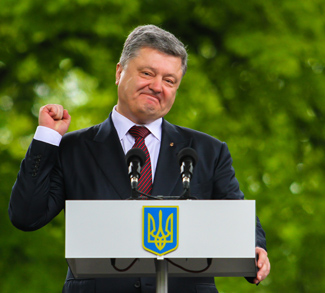If there is a silver lining in the Minsk ceasefire so far it’s that the intensity of fighting along the front has receded since taking effect at midnight on Saturday night.
But in many areas the war rages on.
One such spot is Debaltseve, where a contingent of Ukrainian troops is thought to be completely encircled by rebel forces (the Ukrainian government says otherwise). Debaltseve has strategic value as a rail and road hub linking rebel-held Donetsk and Luhansk, the respective provincial capitals, thus making it hard to believe that the Minsk process would have the rebels accepting a negotiated solution that did not leave the city in their hands.
Consequently, the initial announcement of the Minsk terms might have raised a few eyebrows in punditry circles – but it didn’t take long for them to come back down. Under 12 hours after the ceasefire took effect, rebel commander Eduard Basurin told reporters that the ceasefire wouldn’t apply to Debaltseve. The rationale was that the city is now internal rebel territory since the September 2014 ceasefire line that the rebels agreed to withdraw heavy weapons from puts it firmly in their control. As the above map shows, Debaltseve is the only major urban center that switched hands in Kiev’s favor during the rebels’ intermittent advance between the September 2014 ceasefire and Minsk 2. Unsurprisingly, OSCE has been denied access to Debaltseve and there have been multiple reports of heavy shelling in the city both before and after the new ceasefire took effect.




